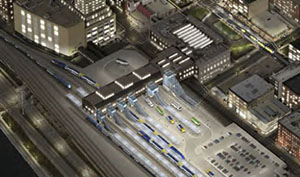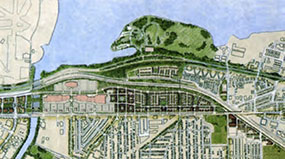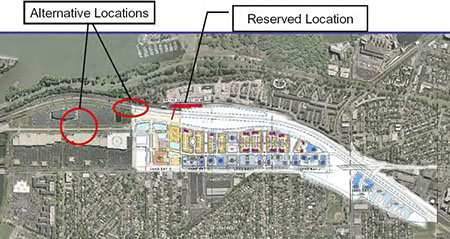Negotiated Exactions involve payments made by a developer as a condition for receiving municipal approvals. Negotiated exactions are determined on an ad hoc basis for individual projects, usually as part of the development approval process. They often take the form of one-time land transfers or cash payments, but may also involve construction activities, or the provision of public services. Exactions have been used to contribute to the financing of transit stations, local roads, sidewalks, streetlights, and local water and sewer lines.

In cases when a planned development is large and will be constructed over many years, the developer and local jurisdiction may enter into a development agreement that also includes negotiated exactions. These agreements often involve the negotiated dedication of land and facilities by developers under a formal agreement or contract.1
In some settings, developer exactions are also referred to as cash proffers or developer contributions. Exactions are similar to development impact fees, but the contribution is negotiated between developers and the local jurisdiction rather than determined according to the predetermined, formulaic process used with impact fees. In some cases the exaction may be required in order for the developer to gain planning approvals. In others the exaction may be voluntary, or may hinge on the public sectors' agreeing to modify a public project in ways that would benefit the complementary private development.
Exactions are an attractive strategy for deriving additional investment in needed infrastructure in high-growth areas and where a jurisdiction's fiscal capacity is limited. They work best in situations where the private development and the public transportation improvements are mutually beneficial. A typical example might involve a private developer agreeing to contribute to a new transit station. In this case, the transit station would provide improved access to the development, and the development would generate additional transit trips.

The Potomac Yard was once one of the busiest rail road yards on the east coast. Decommissioned in 1989, the 295-acre site is located on the banks of the Potomac River in Alexandria, Virginia. Redevelopment plans for the site have been under way since the 1980s and include a new infill rail transit station on the Washington Metropolitan Transportation Authority's (WMATA's) yellow and blue lines as a catalyst for further development.
In 2010, the largest landowner at Potomac Yard approached the City of Alexandria with a request to redevelop a retail shopping center into a 7.5 million square foot transit-oriented development including residential, retail, hotel, and office space. The City was well-positioned to negotiate for funding from the developer, and secured the developer's equity contribution of $10 per square foot for all development within a ¼-mile of the proposed station in exchange for approving a rezoning plan. Assuming that 4.9 million square feet of gross floor area will be built, this agreement will generate a $49.0 million negotiated exaction.

At the outset of deliberations, the City reiterated a need to fund the station without tapping into the existing tax base and without any capital assistance from WMATA. Given these constraints, the City also committed to establishing two special assessment tax districts in the study area. They include a high-density redevelopment district where a special assessment of $0.20 per $100.00 of assessed value would be levied on commercial properties; and a low-density tax district where a special assessment of $0.10 per $100.00 of assessed value would be levied on all properties. The high density special assessment was established in 2011 and is currently funding the planning activities. The low-density special assessment will be established once the station opens.
The City committed to issuing $275.0 million in general obligation bonds to finance the costs associated with the station. Debt service will be paid back using funds from the Potomac Yard Metrorail Fund, which will include net new tax revenues, revenue from two special tax districts, developer contributions, and other anticipated sources such as regional funding and additional developer contributions. Developer contributions provided through the negotiated exaction will be used during the development ramp up period to cover the up-front gap in net new tax and special assessment revenues.
1 Negotiated exactions are addressed in FHWA's Real Estate Acquisition Guide for Local Public Agencies and 23 CFR 710.505. Failure to adhere to the requirements of Title 23 could jeopardize Federal funding.